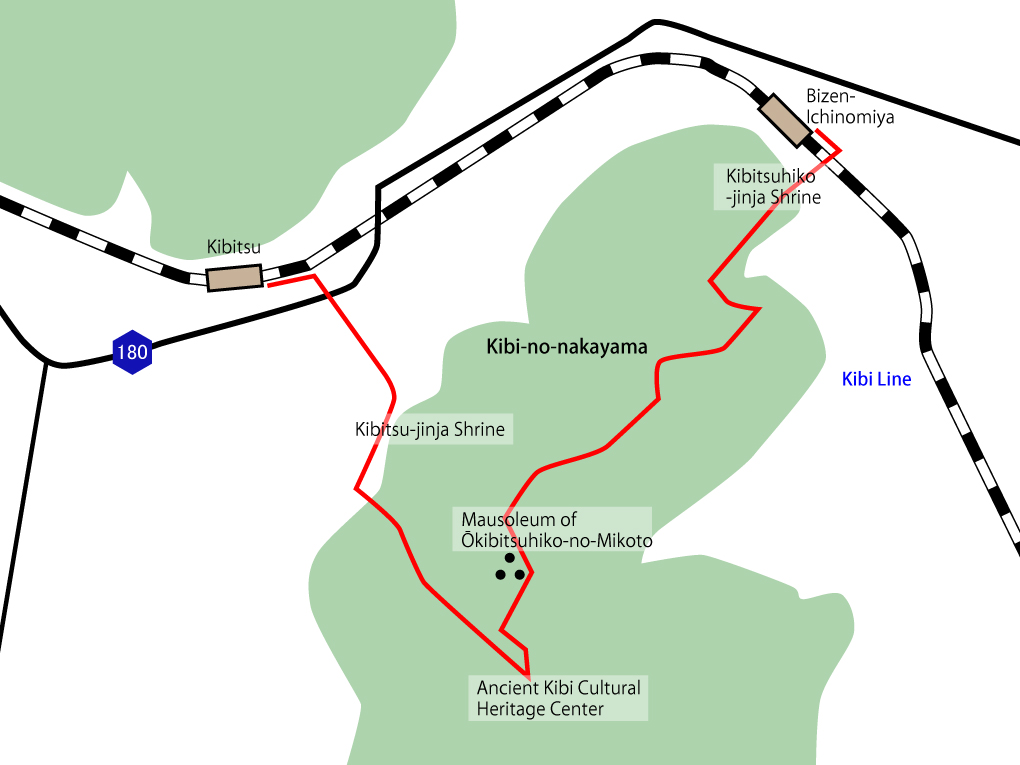From JR Kibitsu Station to the Approach of Kibitsu-jinja Shrine
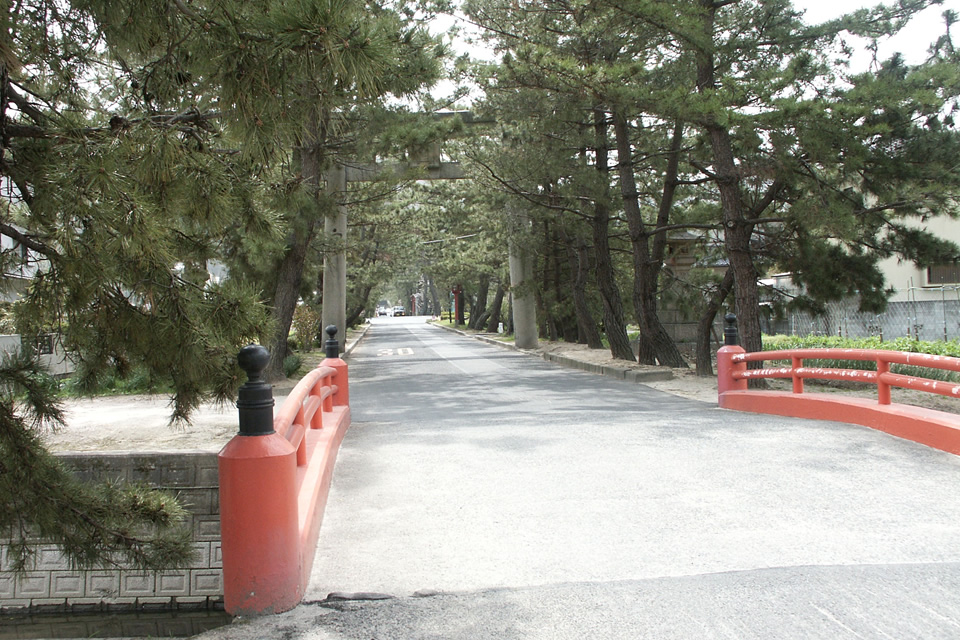
When you get off at Kibitsu Station and walk east, you enter the approach of Kibitsu-jinja Shrine, which is lined with a 500-meter-long pine tree path. Many pine trees are carefully protected from pine weevils, which have been causing them to disappear. The vermillion-painted handrails of the taiko-bashi bridge on the approach add a touch of color to the scenery. The entrance of the approach is connected to the old Sanyo Road, and to the west was Itakura Inn. During the Edo period, the Miyauchi area was under the direct control of Kibitsu-jinja Shrine and was a bustling town as a gateway to the shrine's prosperity.
Main Shrine of Kibitsu-jinja Shrine
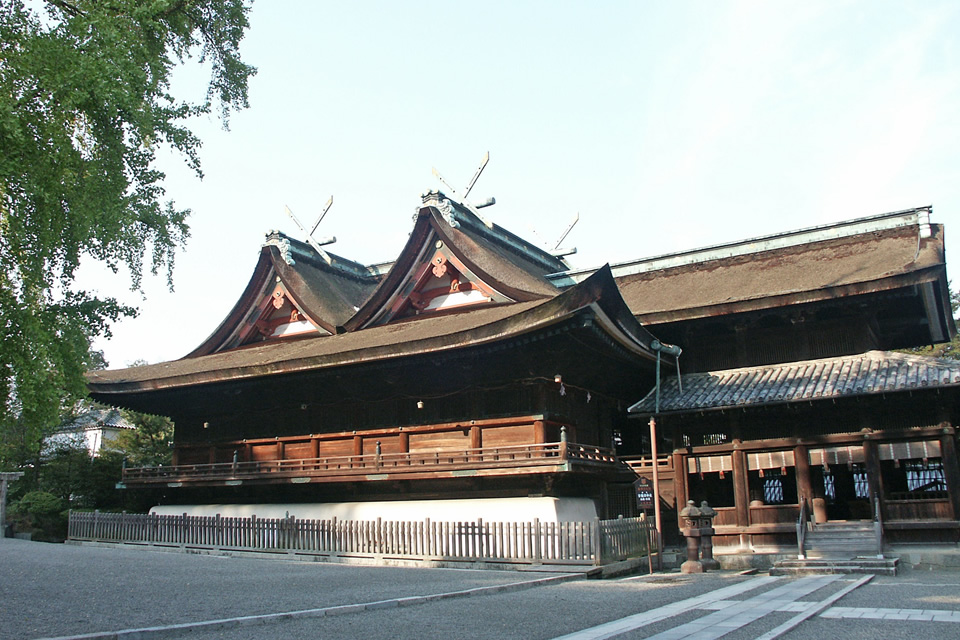
The main hall and worship hall of Kibitsu-jinja Shrine were built in 1425, and are built in a unique style called "Kibitsu-zukuri," where the roofs of the irimoya-tsukuri style are arranged in front and back and connected in the center. It is one of the few national treasures in Okayama Prefecture. (The photo shows the main hall before its re-thatching.)
Re-roofing of the Main Hall
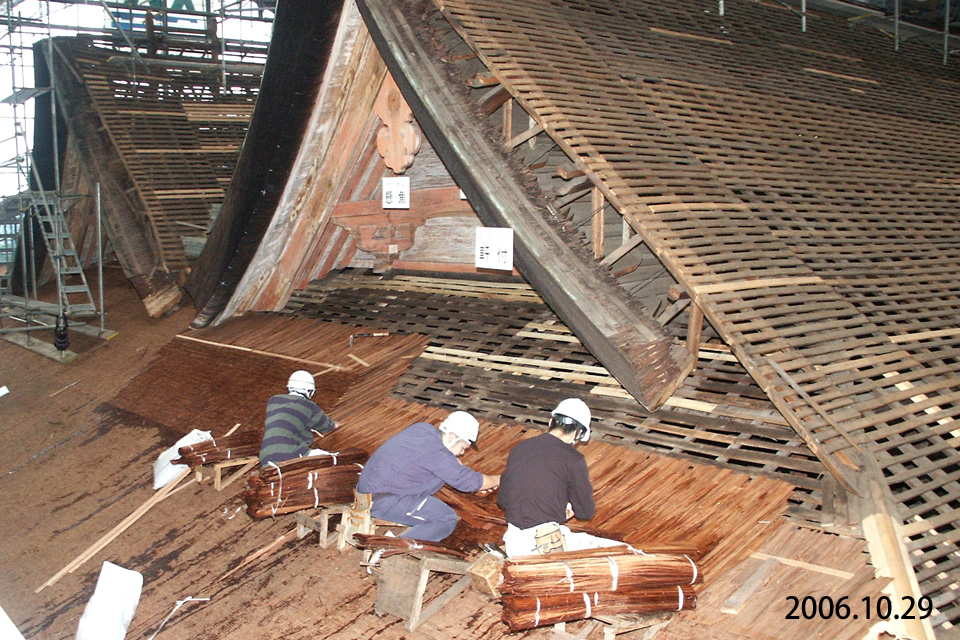
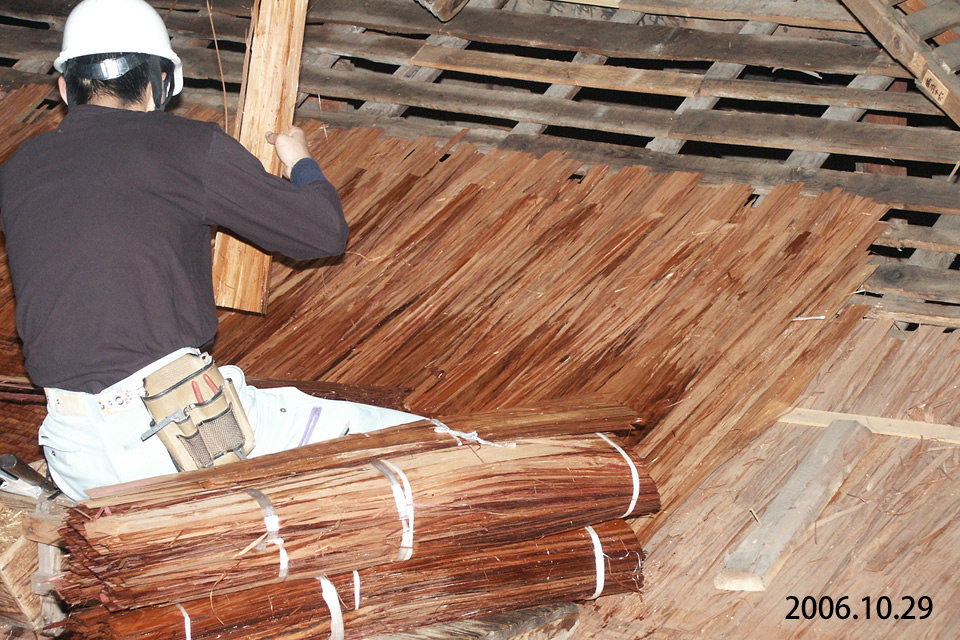
The large hip-and-gable roof with cypress bark roofing is rethatched every 50 years. The current rethatching work took about four years from 2005 to 2008. In October 2006, there was a public display of the rethatching work, and we were able to observe the process of laying cypress bark from the bottom and fixing it with bamboo nails. Photography was also allowed, so we are publishing it as valuable material while expressing our gratitude to Kibitsu-jinja Shrine.
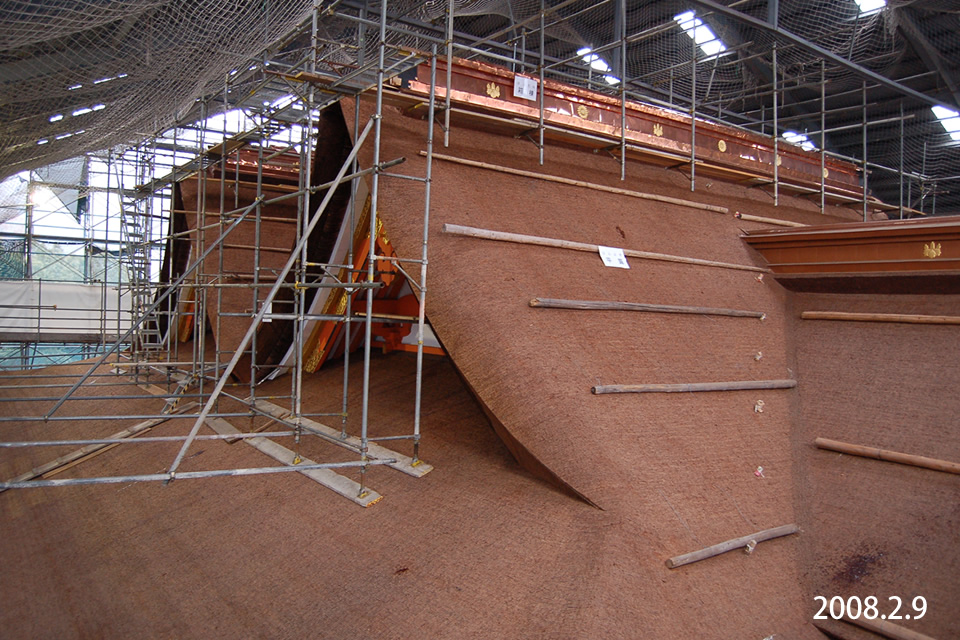
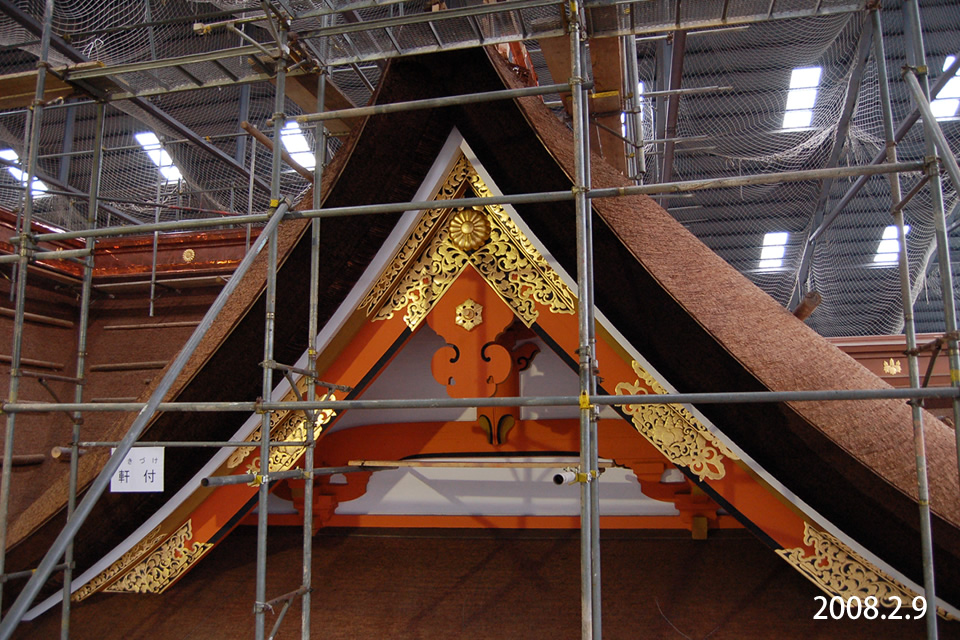
In February of 2008, the large hip-and-gable roof with cypress bark roofing, which was close to completion, was open to the public.
The deep color of the neatly stacked cypress bark roofing, the curves of the hip-and-gable roof, the white and vermillion eaves, and the gold-leaf decorations created a solemn and majestic atmosphere.
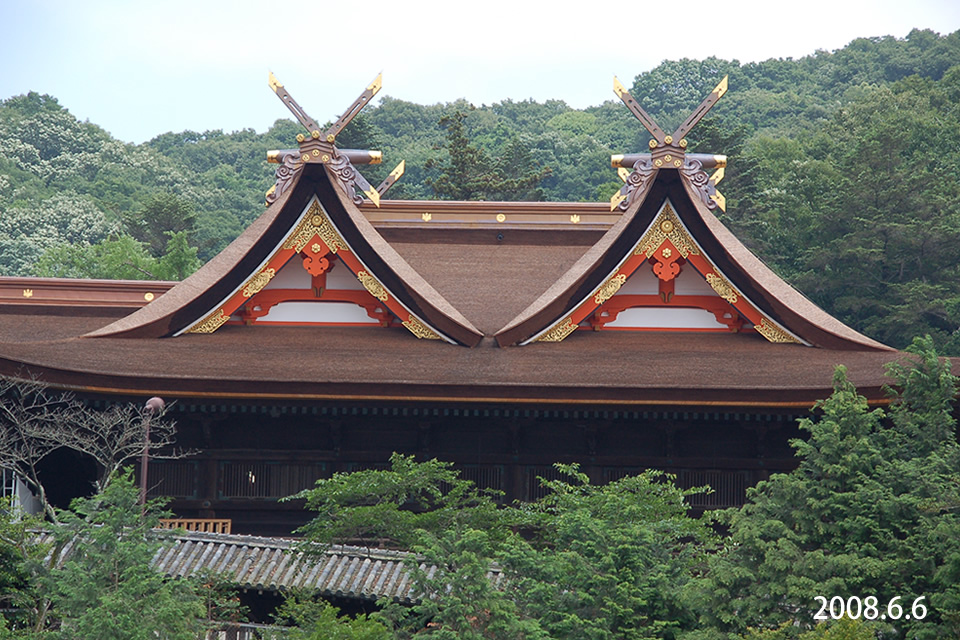
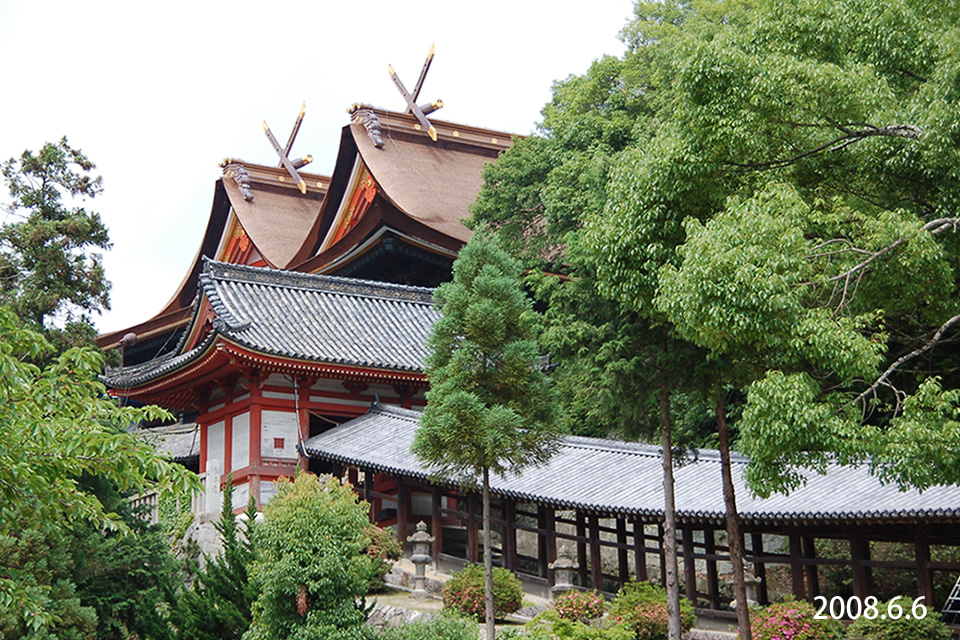
In June of 2008, the scaffolding used during the construction was removed. The trees on the north side, which had grown too large, were removed, and it became possible to see the national treasure main shrine from the north side.
Cherry blossoms and Corridors
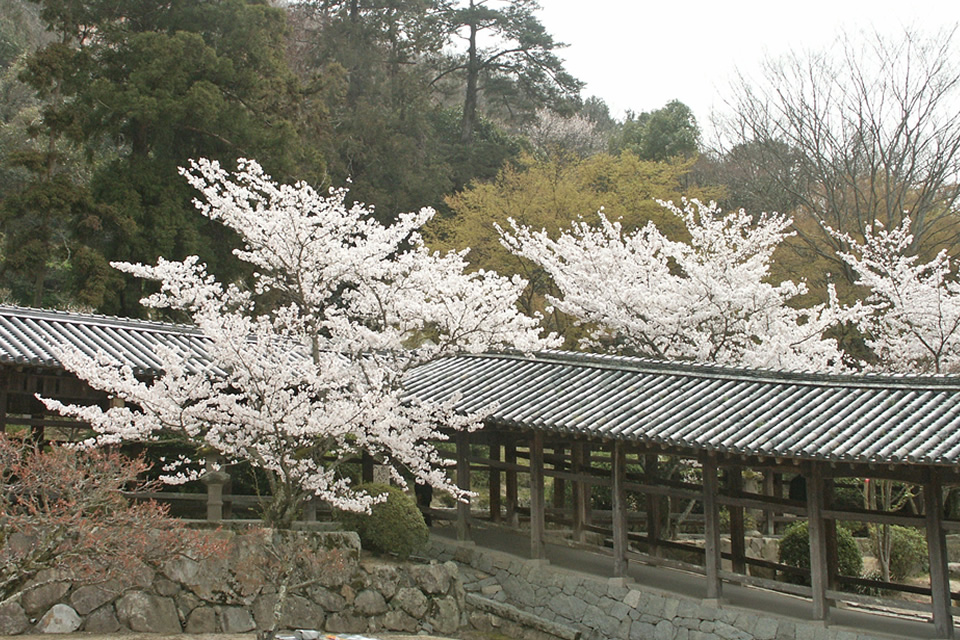
Cherry trees planted on both sides of the corridor are in full bloom. At the Kibitsu-jinja Shrine, you can enjoy various kinds of flowers throughout the seasons, such as plum, camellia, cherry blossom, peony, hydrangea, ginkgo, and maple.
The cherry blossoms with the corridor as the background make for a photo spot.
If you continue on the corridor branching to the right, you will reach the Okama-den, which is related to the Legend of Ura.
If you proceed straight on the corridor, you will find a archery hall and a peony garden on your right. Exiting through the left gate of the Okama-den and crossing the road, you will reach the Uga-jinja Shrine (sub-shrine).
The Weeping Cherry Tree at Uga Shrine
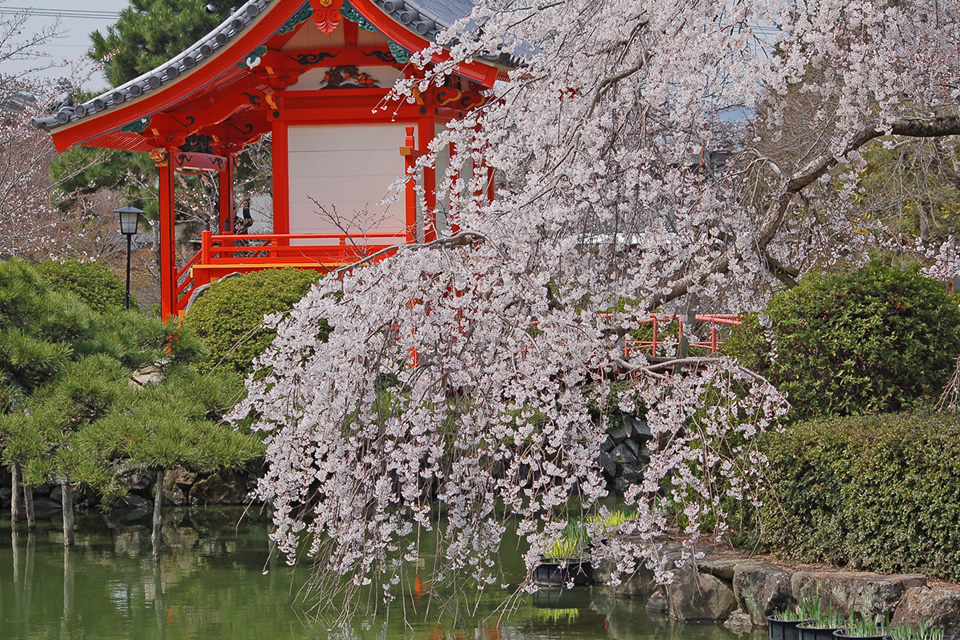
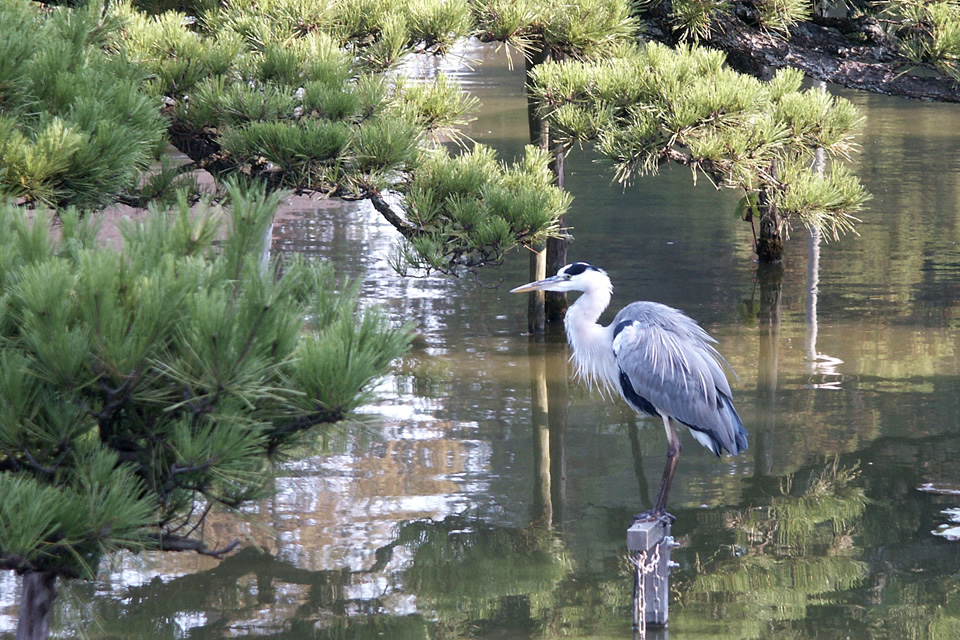
Uga-jinja Shrine is the oldest Inari shrine in Kibi Province, and it is located on a small island in the pond. The "Weeping Pine" and "Weeping Cherry Tree" that hang over the pond are popular photo spots.
From Takimaturi-jinja Shrine to the Hosotani River.
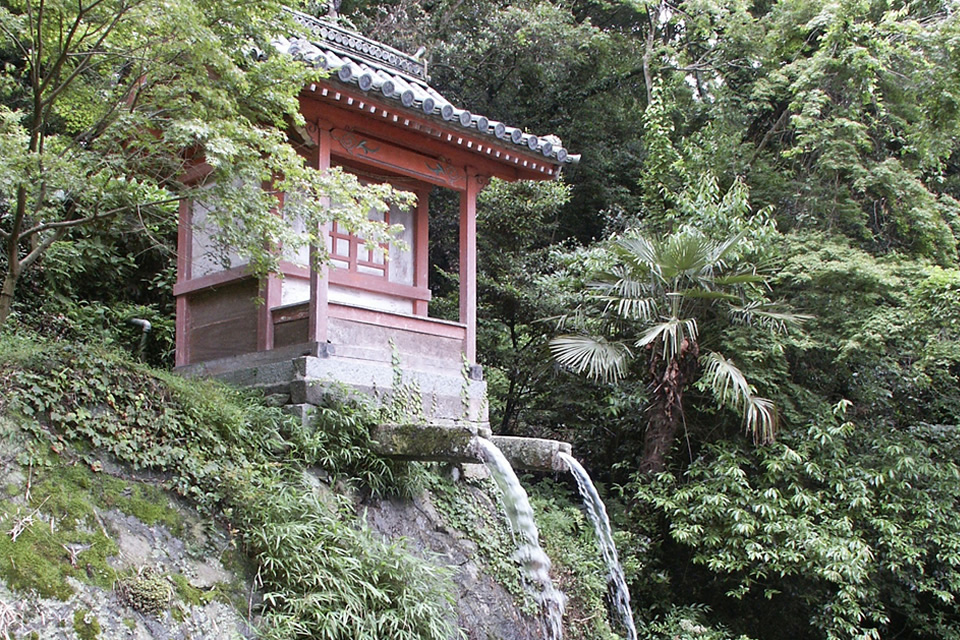
Passing by the Takimaturi-jinja Shrine (sub-shrine) where the water deity is enshrined, you will arrive at the foot of Hosotani River. The Hosotani River has been praised by many poets during the Heian period for its beauty in spring and autumn.
I remembered climbing along the narrow path of Hosotani River during a school excursion. However, now an asphalt road for cars has been built, and the atmosphere of the ancient times is no longer present.
The Mausoleum of Ōkibitsuhiko-no-Mikoto
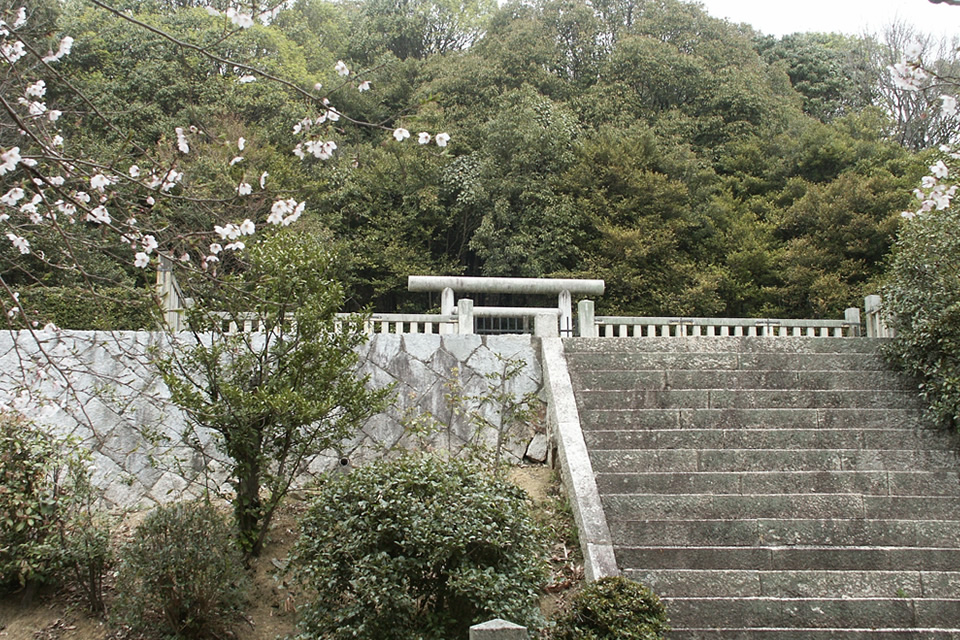
Before climbing the stone steps leading to the Ōkibitsuhiko-no-Mikoto tomb, make a stop at the Ancient Kibi Cultural Heritage Center. The center exhibits ancient artifacts, and at the entrance of the exhibition room, there are explanatory panels. These panels provide information on the ancient Sanyo Road and the coastline of the Yayoi period. The southern part of the Chūsan area of Kibi seems to have been a sea in ancient times.
Upon climbing the stone steps, you will arrive at a plaza where the Ōkibitsuhiko-no-Mikoto tomb of the keyhole-shaped mound, which was used for festivals, is located. The Imperial Household Agency manages the tomb, and it is not possible to enter the fenced area. Families with picnic lunches were enjoying cherry blossom viewing in the plaza. You can reach this plaza from three directions: from Kibitsu, from Niwase, and from Ichinomiya.
Kibitsuhiko-jinja Shrine
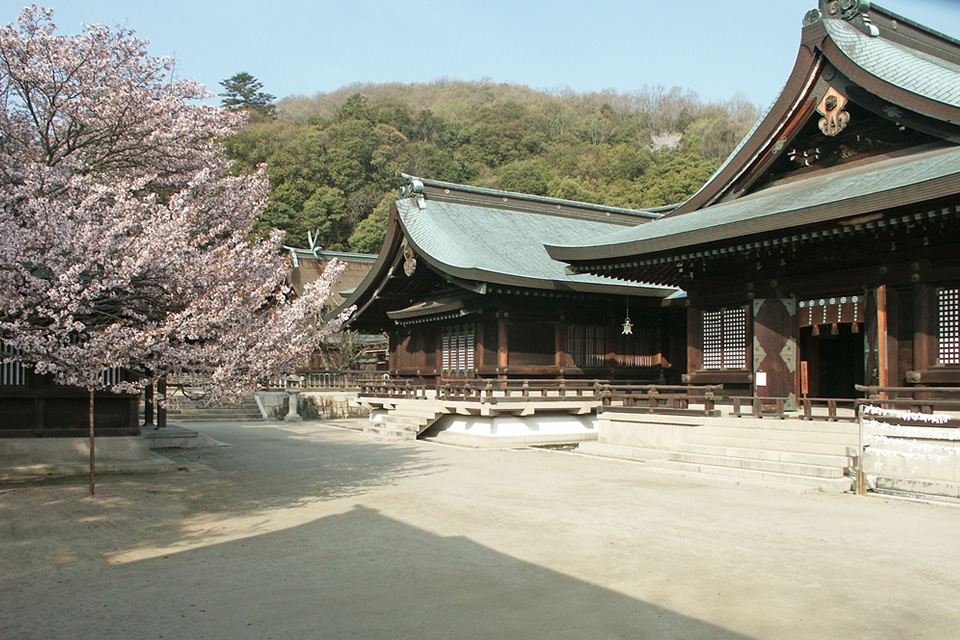
Take the mountain path through Kibi no Nakayama and head towards Kibitsuhiko-jinja Shrine. Pass through ancient stones and circular stone formations. Throughout Nakayama, scattered about are rocks and boulders of ancient faith. Descend a steep slope to the east side of Kibitsuhiko-jinja Shrine.
The enshrined deity of Kibitsuhiko-jinja Shrine is Ōkibitsuhiko-no-Mikoto, as the name suggests. The Main Hall, Wataridono (passage connecting the main hall to the inner sanctuary), Saibunden (where sacred objects are kept), and Haiden (worship hall) are arranged in a straight line, with a solemn structure. Only the Main Hall is an original building from the Genroku era; the other three halls were lost and later reconstructed.
Wedding ceremony at Kibituhiko-jinja Shrine
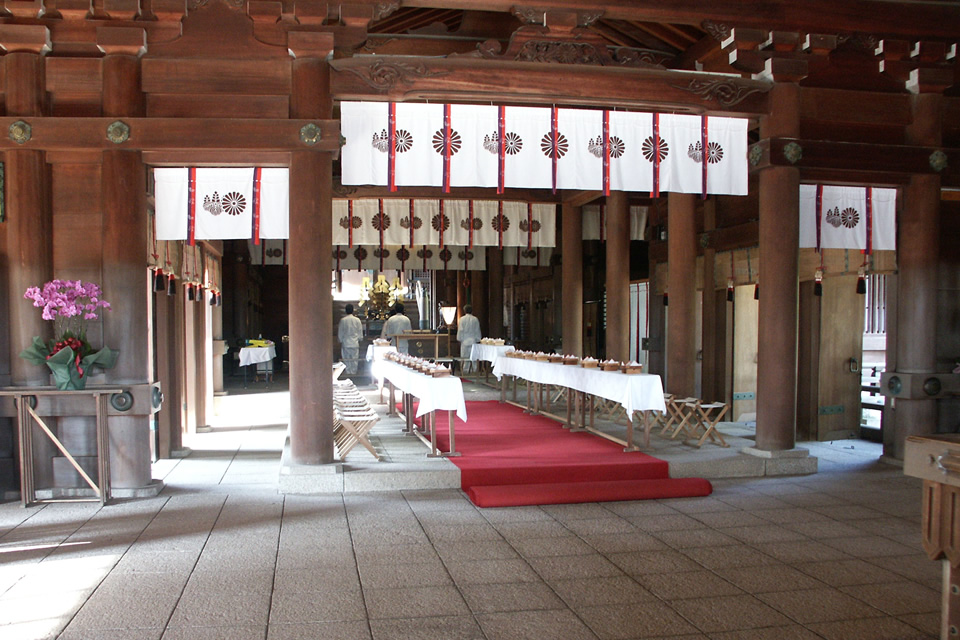
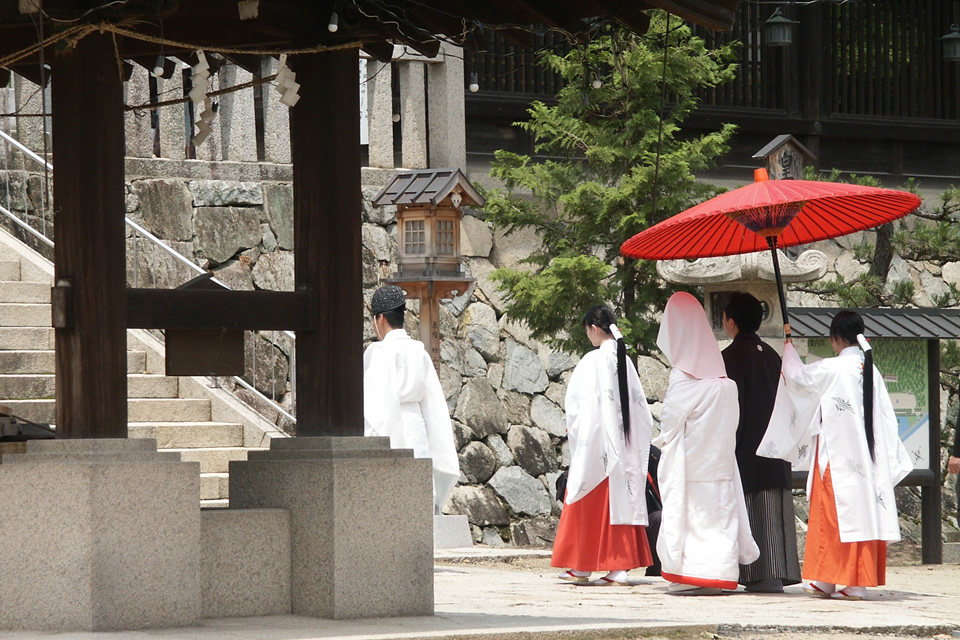
At the hall of worship, a wedding ceremony is scheduled to be held on an auspicious day. A Shinto wedding ceremony at a venerable shrine has a certain charm.
Passing through the Zuishin-mon Gate and crossing the Taiko Bridge, there is a Misima-shiki-style garden on the east side with the Kameshima-jinja Shrine, and on the west side with the Tsurushima-jinja Shrine. The Bizen Ichinomiya Station can be seen right in front.
